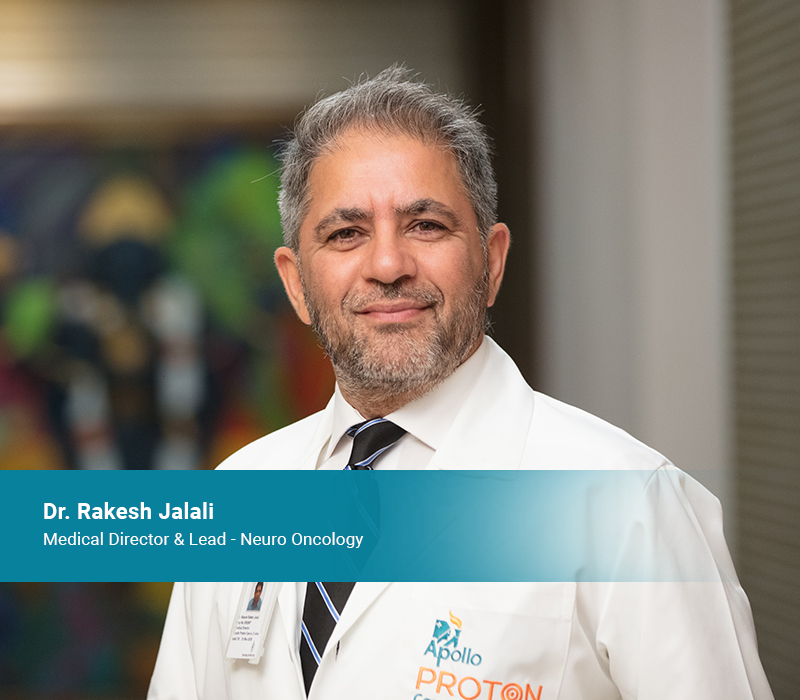NEUROSURGICAL ONCOLOGY
Neurosurgery is a highly specialized niche that plays an integral role in the treatment of brain tumors. The brain is the most complex and delicate organ in the human body; planning brain surgery demands addressing the challenge of quality of life post-procedure. Maximum Safe Debulking refers to the maximum size of the abnormal tissue that can be surgically removed without compromising critical brain functions. Often, neurosurgery is the first line of defense to reduce the tumor size to manageable levels; post-surgery, other forms of treatment are employed to eradicate it.
TYPES OF SURGERIES
Tumors at difficult and deeper locations in the brain are removed effectively and safely using cutting-edge technology and expertise, thereby facilitating adjuvant therapy if needed. This includes tumors of the Thalamus, Hypothalamus, pineal region, and brainstem.
Minimally Invasive Craniotomy
Keyhole surgeries to remove tumors at depth with an eyebrow incision are performed routinely, achieving excellent cosmetic outcomes and minimizing hospital stays.
Awake Craniotomy
Our team at APCC has expertise in performing the maximum number of awake craniotomies in the country, minimizing the risk of paralysis during surgeries in key areas of the brain.
Spine tumors both inside and outside the spinal cord are handled efficiently with spine-specific D-wave monitoring, the gold standard, along with dorsal column and sphincter monitoring to prevent incontinence postoperatively. Spinal neuronavigation with integrated intra-op digital C-arm helps in localizing and removing spine tumors with smaller incisions.
Childhood Brain and Spine Tumors
The higher incidence of malignant tumors and the smaller blood volume, combined with the anesthetic challenges, make the Scylla and Charybdis of pediatric neuro-oncology. APCC is well-equipped to make this difficult journey as safe as possible for the affected child.
ADVANCED SKULL BASE SURGERY
Large tumors of the skull base require a multi-disciplinary approach, combining endoscopic and microsurgical excision. Our neuro-oncology surgeons and the Head and Neck team work together to achieve maximal tumor clearance.
We also perform high-flow vascular bypass to radically eliminate skull base tumors.
Operating Microscope – ZEISS KINEVO 900
The most advanced system available worldwide, the ZEISS KINEVO 900, has redefined surgical visualization for advanced surgical certainty. With its unique robotic visualization system and blend of optical and digital modalities, KINEVO provides neurosurgeons with the much-needed armamentarium in their fight against CNS cancers.
StealthStation S8 Neuronavigation System
This system allows us to precisely locate anatomic structures in either open or percutaneous procedures. The most advanced version worldwide, S8 StealthStation, combines hardware, software, and tracking algorithms, image data merging, and specialized equipment to help neurosurgeons navigate this difficult terrain during surgery.
CUSA – Sonopet Cavitron Ultrasonic Surgical Aspirator
This technology uses ultrasonic waves to help remove tumors. The tips vibrate at a very high frequency, over 50 GHz, creating negative pressure in the targeted tissue. Cells expand under the increasing pressure until they burst, selectively sparing healthy tissue, blood vessels, and nerves while cavitating and selectively extracting tumor tissue.
IONM
Intraoperative Neuromonitoring (IONM) uses advances in electrophysiology to minimize the risk of injury to neural pathways during neurosurgical procedures of the brain and spine. Techniques like SSEP, MEP, EEG, EMG, BAEP, VEP, and mapping of the motor and sensory cortex, language areas, and subcortical tracts have made surgery much safer, protecting vital nerves.
Tumor Fluorescence in Brain Tumor Surgery
The advanced KINEVO operating microscope facilitates the use of fluorescent dyes (5-ALA & Sodium fluorescence) during brain tumor surgery to identify and distinguish tumor cells from normal brain cells. This allows for the selective removal of tumors while preserving normal nerve tissues surrounding the brain.




